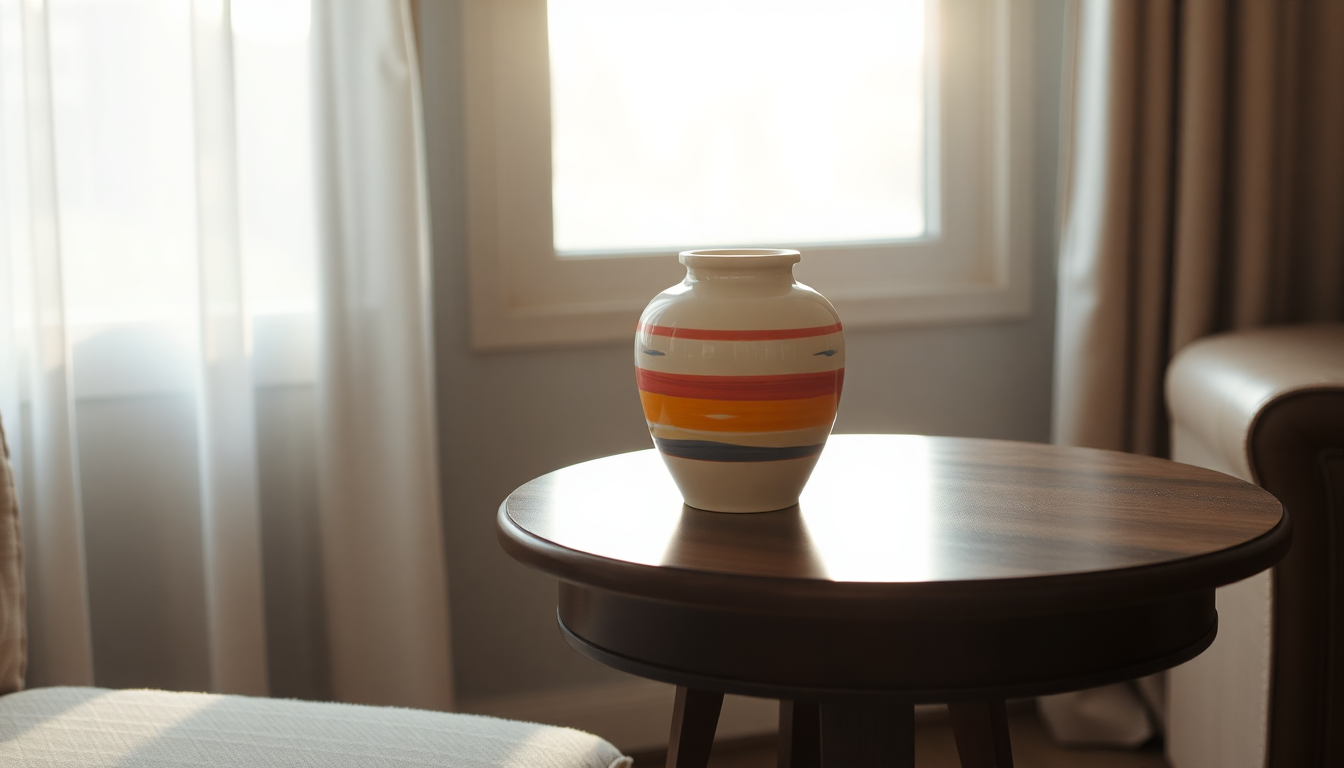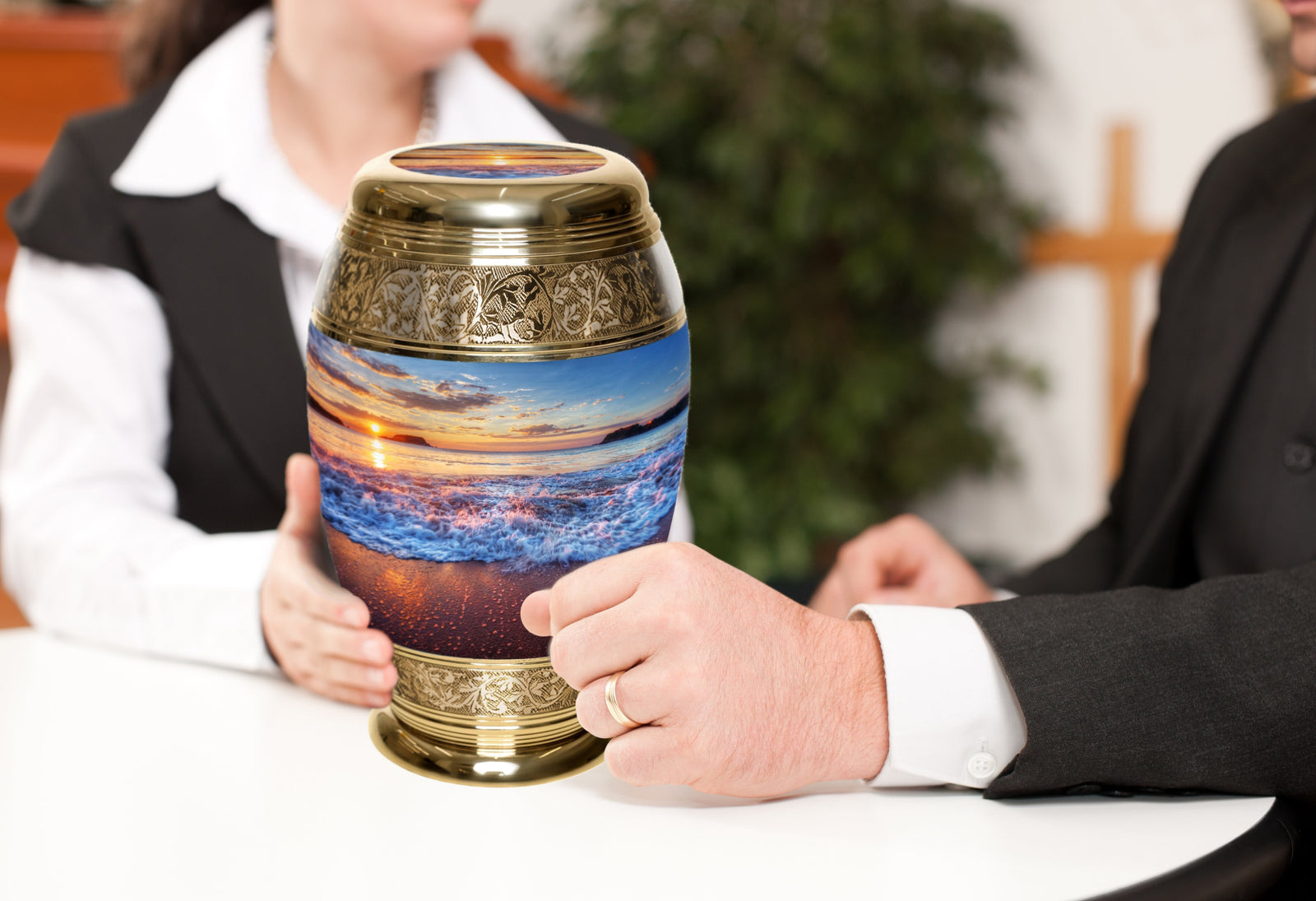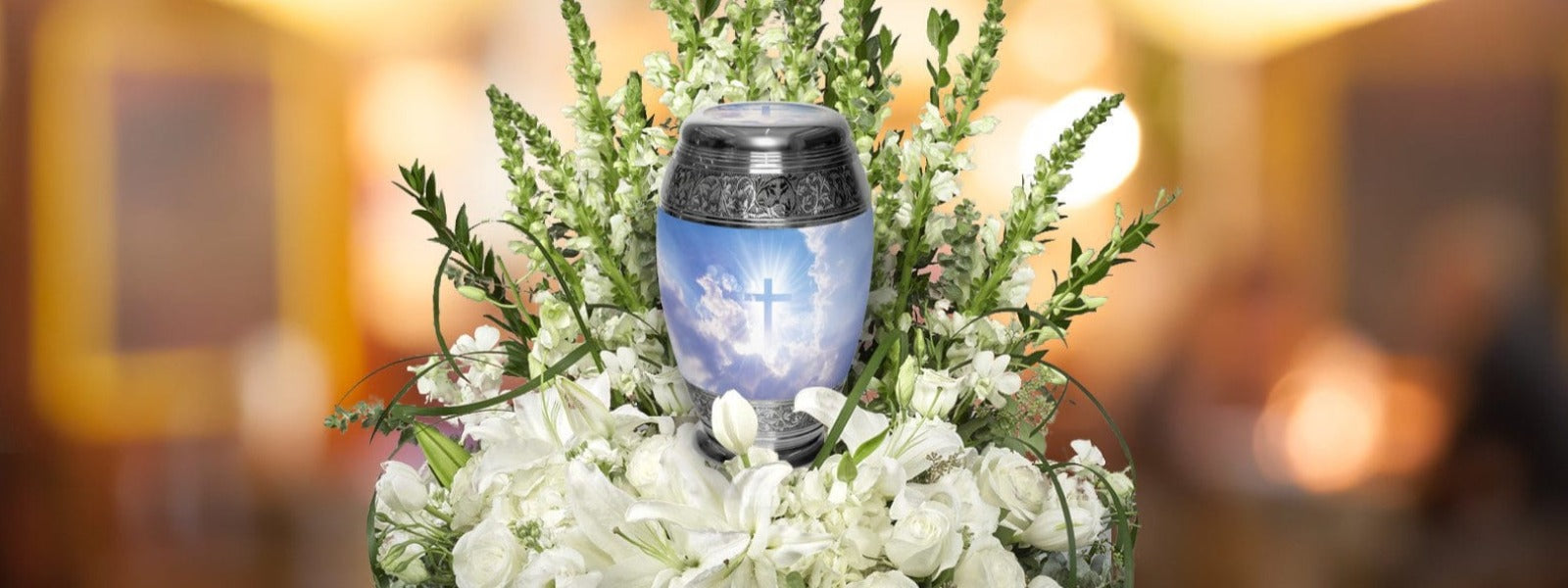Yes, you can put ashes in an urn yourself. Many families choose to handle the ashes of their loved ones personally for a variety of reasons, including personal sentiment, religious practices, or cultural traditions. If you decide to transfer the ashes into an urn or another container, here are some steps and considerations to keep in mind:
1. Gather Supplies:
Before you begin, make sure you have the urn or container, a funnel (this can help in guiding the ashes into the urn), a pair of gloves (to maintain cleanliness and for some a sense of detachment), and a clean cloth or towel.
2. Choose a Calm Setting:
Find a quiet and calm place to carry out this process. It can be emotional, and distractions can make it more challenging.
3. Wearing Gloves:
Wearing gloves can be both practical (keeping ashes off your hands) and emotional (providing a barrier between you and the remains).
4. Using a Funnel:
Position the funnel at the mouth of the urn. Slowly and carefully pour the ashes into the urn. If you do not have a funnel, you can also create one using stiff paper or cardboard.
5. Sealing the Urn:
Some urns have screw-on lids, while others may require a sealant to keep them closed. If you want to permanently seal the urn, you can use an adhesive or epoxy sealant.
6. Clean Up:
After transferring the ashes, there might be some residue left on the outside of the urn or on the surface you worked on. You can wipe this away with a clean cloth.
7. Emotional Considerations:
This can be a highly emotional process. It might help to have someone with you for emotional support, or you may prefer to be alone. Everyone's feelings and reactions will be different, so do what feels right for you.
8. Handling Extra Ashes:
Sometimes, there might be more ashes than the urn can hold. In such cases, families often choose smaller keepsake urns, scatter some of the ashes in a meaningful place, or keep them in another container.
9. Storing the Urn:
Lastly, remember that there's no right or wrong way to approach this. What's most important is that you feel comfortable with the process and that it honors the memory of your loved one. If you're unsure or uncomfortable, it's okay to seek professional assistance or ask a friend or family member to help.
Can You Keep Ashes At Home?






Leave a comment (all fields required)